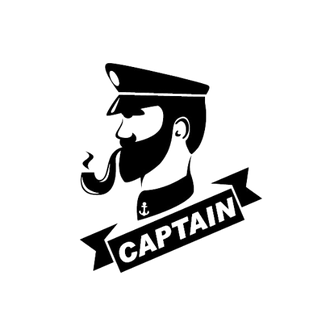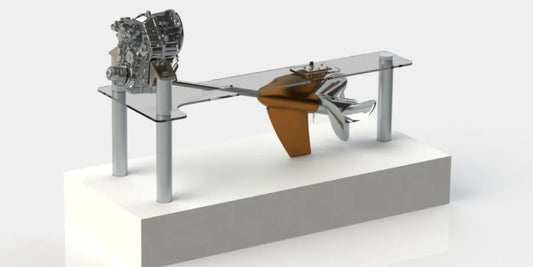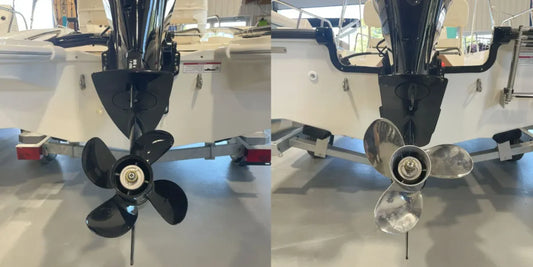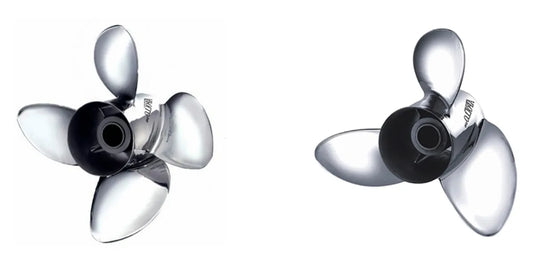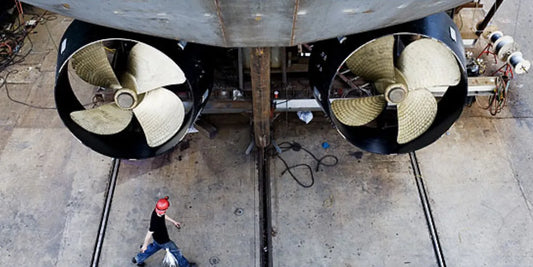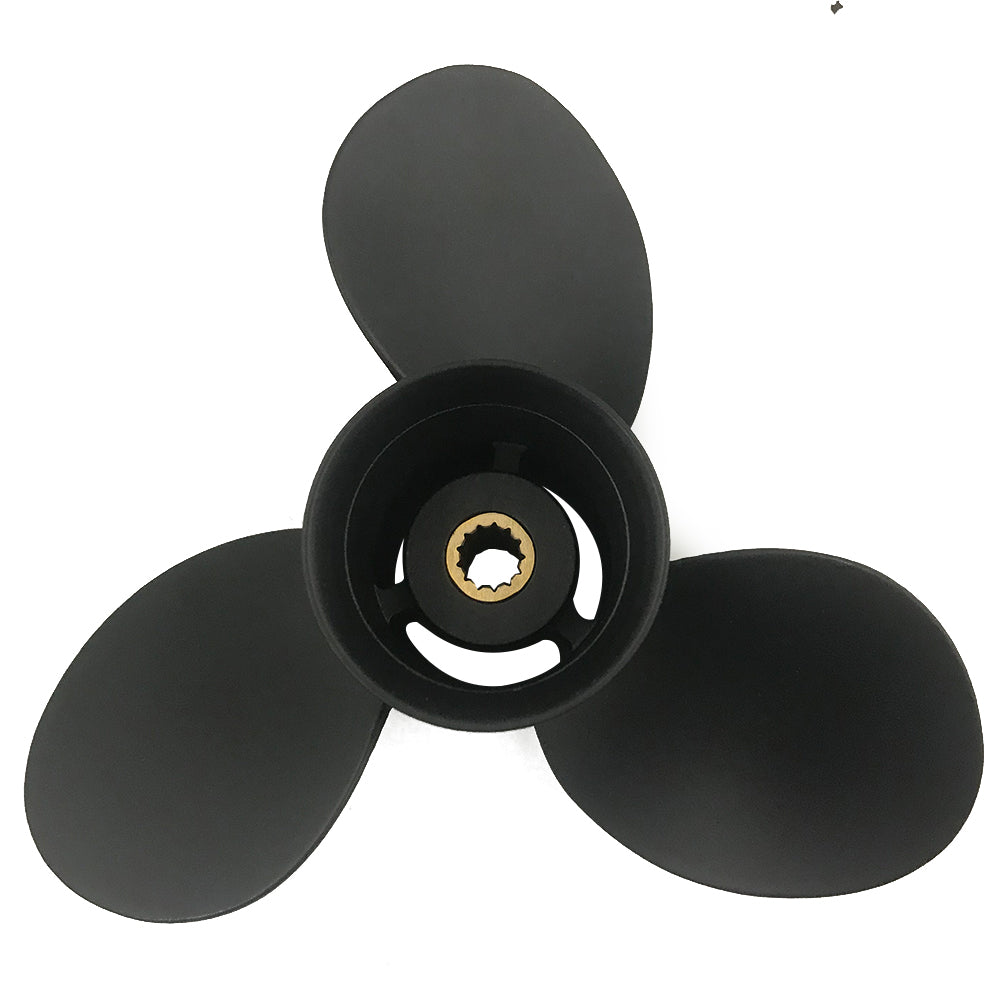In matters concerning boating, safety matters most on the water, and speed is probably the most crucial consideration when it comes to safety. So what makes a speed unsafe? Weather? A kind of boat? Or even the condition of the waters? The fact is: Safe speed will vary depending on a combination of circumstances. And if you know them, it may make the difference between a happy and smooth trip and an unfortunate or dangerous occurrence. In this article, we explore all the main factors that you need to weigh to decide on the safest speed for your boat. From environmental conditions, boating regulations, and the capabilities of the vessel, we share all the gems of wisdom and practical tips to help you make the best decisions. Stay tuned to gather all the knowledge necessary to ensure safety, while making the most of your time on the water.
Introduction to Safe Boat Speed

Importance of Safe Speed for Your Boat
It is essential to always maintain a safe speed on any boat for the safety of oneself and others. Being in so-called "safe" speed means an operator should be capable of reacting adequately to an unexpected obstacle or sudden change in weather or movement of an adverse vessel. One must keep in mind that many jurisdictions impose speed limits in areas such as no-wake zones, near docks, or through high-traffic waterways, thereby minimizing the creation of hazards. Acceleration is a contributing factor in a large percentage of water accidents; hence, it ranks very high as a cause of collisions and injuries.
Download Guide: Factors such as visibility, water conditions, and the maneuverability of your craft will dictate your choice of speed. For example, fog and heavy rain diminish visibility, heighten the chance of accidents, and therefore slow down speed to allow for proper reaction time. On the other hand, in rough water conditions or where there are heavy currents, one has a limited choice: either maintain control of the vessel or be safely slowed down at a higher velocity. Boat operators tend to save fuel, reduce wear and tear on their boats, and ensure a safe environment for enjoyment by maintaining safe operational speeds.
Knowing how to determine the safest speed for your environment can prove to be a valuable skill for protecting marine ecosystems. Speeding will scare faraway wildlife and erect massive wakes that could damage habitats. Safety, sustainability, and enjoyment all work very well hand in hand when effectively combined with knowledge about environmental issues, local laws, and the boat's capabilities.
Overview of Vessel Speed Regulations
Vessel speed regulations primarily exist to ensure safety and protect aquatic environments, while also promoting the harmony of water use. These laws differ from one body of water to another and, depending on the surrounding environment and type of vessel, can include distinct zones and speed limits tailored for different purposes.
No-Wake Zones: These zones are typically located in harbors, marinas, or near shorelines, where the slowest possible speed is required to maintain vessel control. The least wave action is created here to prevent erosion of delicate shorelines and offer protection for swimmers and smaller crafts.
Restricted Speed Zones: These zones are typically marked in areas with heavy traffic or in environmentally sensitive areas, imposing speed limit restrictions to reduce accidents and minimize damage to habitats. Regulatory signs, as well as buoys, will mark the maximum permitted speed, which should invariably be strictly followed for the sake of safety.
Open Water Regulations: Speed restrictions may be imposed at some locations while in open waters, depending on state or local laws. For example, limits are imposed during daylight hours or periods of low visibility to optimize visibility and maneuverability.
Environmental Protection Measures: Speed methods are employed to protect marine life in areas identified as habitats for endangered species, such as those for manatees or turtle areas. Slowing the speed in such habitats increases the protection against collisions and disruption.
Boating Safety Considerations: Safety laws generally emphasize the importance of reducing speeds when visibility is low, traffic is heavy, or water conditions are less than desirable. For example, operators are usually expected to keep a safe distance from other vessels, docks, and moored boats.
Observance of these speed laws not only fulfills a legal imperative but also helps in the stewardship of aquatic ecosystems and increases the enjoyment of waterways for all users. Conscious boating practices, combined with respect for local regulations, can significantly reduce risks and promote sustainable boating.
What Is Considered Safe Speed On Water
Safe speed on water is determined based on the conditions, weather, visibility, traffic density, and the presence of any hazards. Such speed enables boat operators to maintain control of their vessels in the face of sudden occurrences, to maneuver methodically around collision threats, and to remain within the boundaries of local laws. For example, in reduced visibility due to fog or heavy rains, it is paramount that the operators restrict their speed to the extent that they have enough time in sight to discover, maneuver, or avoid obstacles and threats.
The time and distance required to stop or maneuver under a broad range of situations sets the speed of the vessel; thus, an essential factor remains the size of the vessel. The larger the vessel, the longer it takes to either stop or change direction, and hence the speed of the ship has to be correspondingly decreased. Speed must be further reduced when a vessel navigates in areas with dense traffic or near swimming areas to allow for extra reaction time and reduce hazards to others.
According to studies by maritime bodies, the drifting of speed from that which is regulated is a significant causative factor in maritime accidents. Excessive speed is one of the factors that can lead to collisions and accidents on water, requiring utmost care from a navigator. By applying all these principles to boat handling, stemming from an understanding of the above facts, in later stages, will invariably open the waterways for safe navigation by all and cause minimal disturbances to the environment.
Factors to Consider When Determining a Safe Speed

Water Conditions and Their Impact on Speed
Generally, water conditions dictate a safe boating speed, navigation, and operational safety. When water conditions are calm, speed increases may be allowed, although an operator must remain wary of unseen hazards under the water or sudden weather changes at any point. Conversely, rough waters induced by high winds, strong currents, or considerable wave action require maintaining slower speeds to ensure higher levels of control and stability, thereby mitigating the risk of capsizing or collisions.
Several studies show that speed adjustments become necessary when navigating through limited visibility conditions in the fog, heavy rain, or twilight. Reduced visibility creates adverse factors by simultaneously limiting reaction time and making it harder to spot other vessels, floaters, or narrow passages. Likewise, navigation through shallow waters imposes restrictions on speeds to prevent damage to the propeller and erosion of aquatic habitats.
Determining a safe speed can be aided by understanding the relationships between water temperature and local conditions, as well as meteorological changes. In wintertime, freezing brings in the threat of ice formation, while in warm seasons, the onshore breeze can create wake turbulence or even more recreational vessel traffic, hence the moderation of speed. Through continuous observation and timely response to these conditions, operators can ensure the safety of all waterway users and comply with local regulations.
The Evaluation of Wind and Water Conditions: Making Sure It Counts
Before making a decision, it is essential to study the meteorological conditions and tides within the area of interest. Hence, the different influences can be observed among the regions. The adverse winds make the waves choppy and reduce visibility; hence, it becomes extremely difficult to maintain control of the craft. For example, water currents may exhibit a wide range of variation as they change at different locations and times of the year, making navigation practically complex. For instance, stronger currents may have to be confronted to maintain proper speed and maneuverability.
Visibility has to do with safety. Data indicating a wind force exceeding 15 knots strongly suggests that a vessel is at risk of capsizing or equipment failure, regardless of its size. Calm water and low winds will come with the best navigation prospects. With the help of wind instruments, such as a weather forecast app or a barometer, the operator intends to anticipate an impending change in the wind and take the right action to ensure their safety. These ongoing evaluations of both conditions and choices for maritime operations will minimize risk while providing a great experience on the water.
Visibility and Safe Boating
Visibility is of utmost importance for any waterborne voyage to ensure safety and efficiency. The very idea of clear visibility conjures images of an operator who can identify a hazard in time to take measures to avoid it, whether it comes from another vessel, a buoy, or an underwater obstacle. On the other hand, anything that compromises visibility, such as fog, heavy rain, or deep shadows of dawn or dusk, dramatically increases the risk of collision and navigation errors.
The utilization of modern systems, including GPS, radar, and marine-grade lighting, enables maintaining situational awareness even in difficult visibility conditions. Radar activation protects against objects that are dangerously close when visibility is impaired, while GPS ensures the vessel proceeds according to the navigation set from the waypoints. It is also worth noting that safety is enhanced somewhat by following local navigation protocols, such as reduced speed, and maintaining a continual lookout during restricted visibility. Visibility is thus paramount, and the use of modern applications ensures the safety of passengers and allows for smooth marine operations.
How to Check and Decide If a Speed is Safe

Speed-Testing Tools and Techniques
The measurement of speed requires various advanced tools and methodical approaches to obtain accurate assessments, especially under varying conditions. The most common speed-measuring tool is the GPS, which calculates speed by measuring how long it takes an object to move from one geographical position to another. Most modern GPS systems track speed in real-time to maintain accuracy, even in remote terrain. Speed sensors onboard vehicles are also heavily relied upon in marine and aviation applications to provide measurements of fluid flow or surface flows, with the systems considered most credible.
Radar and lidar technology are widely used for automobiles traveling on land, especially for dynamic speed determination purposes. The radar gun sends radio waves to ascertain the speed of moving objects, while lidar utilizes laser-based, precise detection. Both of these tools see their utility in traffic control and enforcement measures related to safety standards.
The Doppler shift is another method that finds application in various fields, including transportation and sports. By observing the frequency shift produced by motion, scientists can determine or estimate speed. Then again, nowadays, digital applications and integrated systems on smartphones and vehicles somehow aggregate all methodological variants to provide users with unified, comprehensive speed metrics that add value to everyday usage and operational safety.
Evaluating Your Vessel's Capabilities
Prior knowledge of a vessel's capabilities will provide a safe and suitable environment in which to work and get results. Modern technology has advanced to include a plethora of analysis tools used to measure fuel consumption, engine performance, and navigational accuracy. Integrated solutions enable the analysis of historical performance data, the identification of trends, and the preparation of recommendations to optimize operational activities. Maintenance scheduling can also be customized based on real-time diagnostic data to prevent unexpected breakdowns and extend the lifespan of critical components. Armed with modern enabling technologies, vessel operators can optimize resource consumption and achieve maximum operational standards.
Understanding Speed Limits in Different Areas
Speed limits are imposed to ensure the safety of drivers, passengers, and pedestrians, as well as to maintain the smooth flow of traffic. There can be wide variances depending on the type of area and road conditions. For example, a residential area typically has lower speed limits of around 25 mph, providing special consideration for pedestrians, children, and cyclists. In contrast, highways and interstates are built with faster speeds in mind and can thus range from 55 to 75 mph, depending on the state or area.
Urban regions with traffic congestion and numerous intersections typically maintain moderate speed limits of 30 to 45 mph to facilitate the smooth flow of both vehicular and pedestrian traffic. Almost always, temporary speed restrictions are imposed in school and construction zones, ranging from 15 to 25 mph, to safeguard children, workers, and other vulnerable road users. Rural roads, although less congested, will have different speed limits, primarily based on the district in which they are located and the road's curvature.
The development in transport technology is ongoing; therefore, adaptive cruise control systems and regulation systems can help drivers stay closer to speed limits, reducing the likelihood of human errors. Understanding these speed variations and adhering to them ensures safer roads and more comfortable driving for all.
Boating Safety and Avoiding Collisions

Recognizing Risks at Higher Speeds
Working with higher speeds in any scenario, whether on roads or waterways, exponentially raises the possibility of accidents and collisions. Speed reduces the time available for reaction and, therefore, makes it difficult to take evasive measures upon encountering obstacles, sudden changes in traffic patterns, or environmental conditions. Studies have shown, for instance, that with an increase in speed, the force of impact in collisions increases exponentially, along with property damage and injuries. Such factors on waterways include wakes, currents, and diminished maneuverability at higher speeds, all of which increase the risk of accidents.
From a safety perspective, high-speed navigation calls for enhanced vigilance. Standing still is usually acceptable except when one knowingly feels rushed; one will certainly need to be quick enough to react when moving faster due to thirst. Risk is diminished by scanning surroundings for potential hazards, anticipating the actions of other vehicles or vessels, and being ready to either accelerate or slow down. And safety systems like collision avoidance and radar will continue to reduce these risks effectively. However, the operator's judgment, assessing limits as allowed by the conditions, must always take priority in attempting a safer and controlled trip down the channel.
Ways to Avoid Collisions While Navigating Your Vessel
Hence, to avoid a collision, one must maintain situational awareness, develop a plan, and employ measures that are most effective. Operators should always maintain vigilance and properly apply the right-of-way regulations prescribed by the "Rules of the Road" for maritime navigation, thereby minimizing errors as much as possible in collision situations. Constant checks and calibration of the GPS, AIS, or radar, as the chief navigational tool, shall greatly assist in decision-making in real-time scenarios, particularly during low visibility or heavy traffic.
By further understanding weather patterns, tidal fluctuations, currents, and other factors, operators can predict situations and act accordingly. Studies have concluded that including collision-prevention training increases situational awareness among the crew, thereby reducing human factors in accidents. The operator must be proficient in communication skills, as radio communication between vessels must be clear and unambiguous, ensuring that intentions are understood and do not lead to misunderstandings in complex scenarios. Technology and judgment together can help the navigators be relatively safe and minimize risk along waterways.
Importance of Boating License and Safety Training
Issuing a boating license and performing some basic safety training are essential to ensuring that responsible boating navigation can take place. In other words, a license means the individual has been subjected to some level of knowledge assessment regarding waterway rules, vessel operations, and emergency procedures. Safety, on the other hand, involves training in applying that knowledge in specific practical scenarios, thereby preparing for cases such as adverse weather or equipment difficulties. According to recent studies, one significant fact stands out: those with a license and training are far less likely to be involved in boating accidents, clearly laying the importance of preparation and education.
Safety training typically encompasses components such as CPR, man-overboard recovery, and firefighting. This set of skills comes in handy when a boater needs to quickly respond to an emergency and minimize the risk of injury to passengers or crew. Depending on the jurisdiction, licensing and training requirements may vary, but their universal purpose remains to provide the boat operator with the proper skills and situational awareness to avert an accident. Investing time in these measures will not only satisfy legal requirements but also build confidence and foster a culture of safety within the boating community.
Conclusion: Best Practices for Safe Boat Speed

A Short Summary on Key Checks Regarding Safe Speed
To ensure the safety of everyone on board and other waterway users, a safe speed must always be maintained. Some checks to ensure responsible boat operation include:
Check for Weather Conditions: A sudden change in weather might cause changes in visibility and water conditions. Always be sure to check for weather changes and adjust your boat speed accordingly, such as in reduced visibility or rough waters.
Keep an Eye on Surroundings: Be aware of other boats, swimmers, or obstacles in your immediate vicinity. Slow down when traversing a crowded area to give way to others and prevent collisions.
Observe Speed Regulations: Specific speed limits are often set in different waterway zones, such as no-wake areas or narrow channels. Observing these limits not only keeps you out of trouble but also enhances the safety of all users.
Adapt to Vessel Size and Load: The heavier or larger the vessel, the greater the distances needed to stop or to maneuver. Speed must be adjusted accordingly to the ship's performance capability under the present conditions.
Account for Night Operations: Limited light visibility increases the risk of accidents. Ensure speed is slowly reduced and that proper navigation lights are on to increase safety while navigating at night.
Use Navigational Aids: Utilize buoys, markers, and charts to identify hazards like shallow waters or submerged debris. These are all the guiding checks to keep on the safe track and at an adequate speed.
Prioritize Fuel Efficiency: For one thing, unsafe speeds can quickly exhaust the fuel. For another, cruising efficiently not only keeps you safe but also conserves energy and cuts down expenses.
If one observes the above checks at all times and remains alert, every boat owner can surely minimize risks to a great extent and also enjoy the best boating experience.
Promoting Responsible Boating Habits
I believe education and personal responsibility are the prominent factors that can help promote responsible boating practices. Therefore, before I go boating, I make sure to check on things such as safety, hygiene measures in the environment, and other local laws. I have gone on to take boating courses and safety workshops to increase my knowledge, so I can handle any situation. It was important not only for me to be safe, but also for those who share the same waterways with me.
Another practice I undertake is respecting and preserving the environment. That is to say, not dumping waste, avoiding fuel spills, or disturbing any wildlife, such as a nest or a habitat. For instance, I consciously pick up any trash or debris I find so that the site is cleaner than when I arrived. These small steps sustain responsible boating and keep the waterways beautiful for future generations.
Finishing off, verticalism and community are fundamental. I always try to engage some fellow boaters in every way I can, exchanging tips, reminders, or resources. Whether it's about life jackets or weather forecasts, wider communication can only help bolster all our efforts for safe and responsible boating. To me, encouraging these practices means being an example for others to follow and enjoying the water respectfully and conscientiously.
Safe Speed of a Vessel- My Final Thoughts
When considering the safe speed of a particular vessel, a balance is struck between caution and efficiency. I always considered several factors before setting a speed. Visibility, weather, and water conditions are all important. If visibility diminishes or weather worsens, then definitely drop the speed for safe navigation. I also keep traffic density in my mind, since the presence of many vessels requires sharper manoeuvring and a more conservative pace. The speed at which I can react promptly to any unexpected obstacle is a must for me.
Safety also pertains to the laws dictated for the waterway I am navigating. I always, almost as a principle, respect speed limits, no-wake zones, and distances from anchored vessels or docks to avoid the creation of hazards and to protect others. Then there is the safety of my vessel. Depending on its size, weight, and the load it carries, the safe speed varies. To me, knowing these limits is just part of being a responsible self-aware boater.
In the end, it's a matter of preparation and perception in itself: a determination to go about considering and helping make unique changes during every outing while staying alert. Preparing for the thrill of safe buoy riding is one choice of mine that can also help avoid any violations. My conscious picks assist in averting accidents and provide maximum pleasure to all on the water. Safe speed means not getting into risk, yet it means developing a boater's confidence and accountability.
Reference Sources
-
What Is a Safe Speed? - Boat Ed
Discusses factors like visibility, traffic density, and vessel maneuverability in determining a safe speed. -
Safe Speed - Boater Exam
Highlights key considerations, including visibility conditions, wind, and water factors, for safe boating speeds. -
What Determines If a Speed Is Safe for Your Boat - Trident Marine
Covers elements like wind, water conditions, area laws, and engine capabilities. -
How Do You Know When You Are Operating Your Vessel at a Safe Speed? - Wavve Boating
Explains vessel characteristics, weather conditions, and other factors to ensure safe operation. -
What Determines if a Speed Is Safe for Your Boat? - MI Wheel
Focuses on engine size, vessel capabilities, and environmental conditions for safe boating.
Frequently Asked Questions (FAQs)
What factors should I consider to deem a particular speed safe for my boat?
When considering a safe speed for your vessel, there are other crucial factors to examine. These include water conditions, visibility, and the presence of boat traffic. Being familiar with local speed limits and any speed limit signs will help you avoid loss of control while driving your boat. Furthermore, the factors of wind speed and wind direction can significantly assist in setting your desired speed for safe navigation of the waterway. Remember, always adjust the speed according to the circumstances you may face to ensure a safe and enjoyable boating experience.
How would weather conditions impact the safe rating of vessel speed?
Weather determines the safe speed of a vessel. High winds and rough waters can require speed adjustments to maintain control of the boat. Furthermore, visibility problems may necessitate proceeding at a safe speed to avoid accidents. Before going out with your boat, always check the weather forecasts to learn what speed you should maintain under the prevailing conditions. This will allow you not only to take actions to prevent accidents but also to increase the safety of boating.
What is the importance of maintaining a safe operating speed?
Safe speeds must be maintained for several reasons. It allows the captain of a boat to have sufficient reaction time to avoid the collision with another ship or an obstacle. A safe speed also enables you to have better control of your ship and secure navigation. The safe speed also lessens the chance of an accident while providing for a happy boating experience. Constantly monitor your vessel's speed and adjust it accordingly to maintain safe boating practices.
How can one adjust the speed under boat traffic?
Adjusting speed is crucial for safe navigation in conditions of heavy boat traffic. In areas of heavy boat traffic, it is best to operate at such speeds that will allow you to rapidly respond to any sudden movement or change in course of other vessels around you, in which case running slower will ensure adequate space for maneuvering and avoiding collisions. You must become familiar with local boating practices and typical traffic patterns on busy waterways, so that you can assess situations concerning safe speed and maintain control of your boat adequately.
What role do posted speed limits play in the determination of a safe boat speed?
Posted speed limits act as guidelines to determine safe boat speed while navigating specific waterways. They are established based on waterway size, traffic levels, and environmental considerations. For boating safety, it is essential to observe the posted speed limits. They ensure that all vessels can operate in a manner that avoids violent collisions. Always keep an eye out for local speed limits and adjust your speed accordingly. Doing so offers safety to yourself and, in turn, helps maintain a pleasant atmosphere for everyone in the boating community.
How do you know when you are operating your vessel at a safe speed?
Safe speed is associated with the size of factors to consider in the environment. One must take into consideration water conditions, visibility, and the movements of other vessels in the vicinity. Another proverbial yardstick is that you must be able to take efficient action to avoid an accident at this speed. If there is any display of uncertainty regarding the immediate environment, the established code states that you should slow down. Considering your boating license periodically and abiding by local boating laws will also guide whether the speed at which you are operating is safe.
